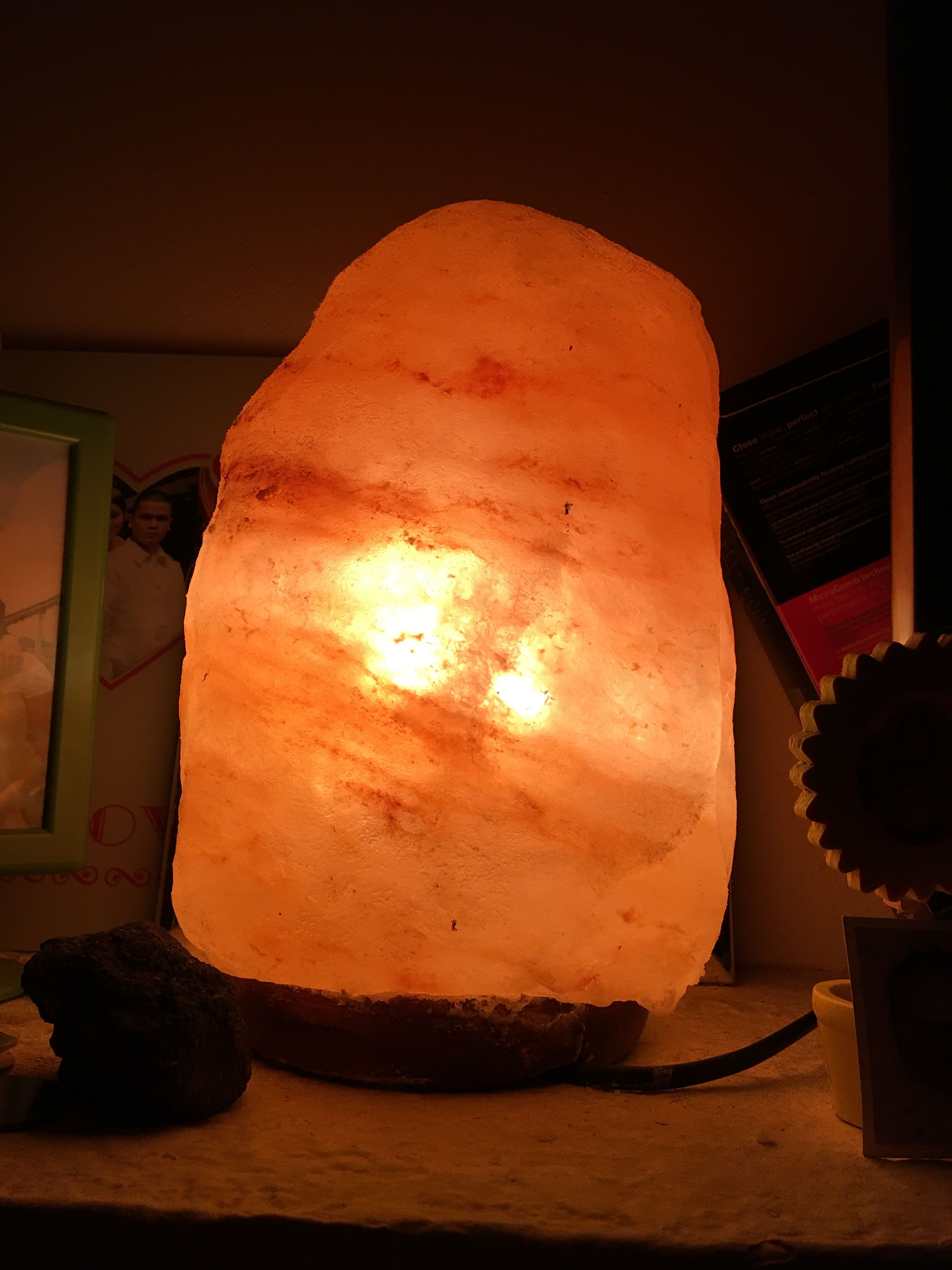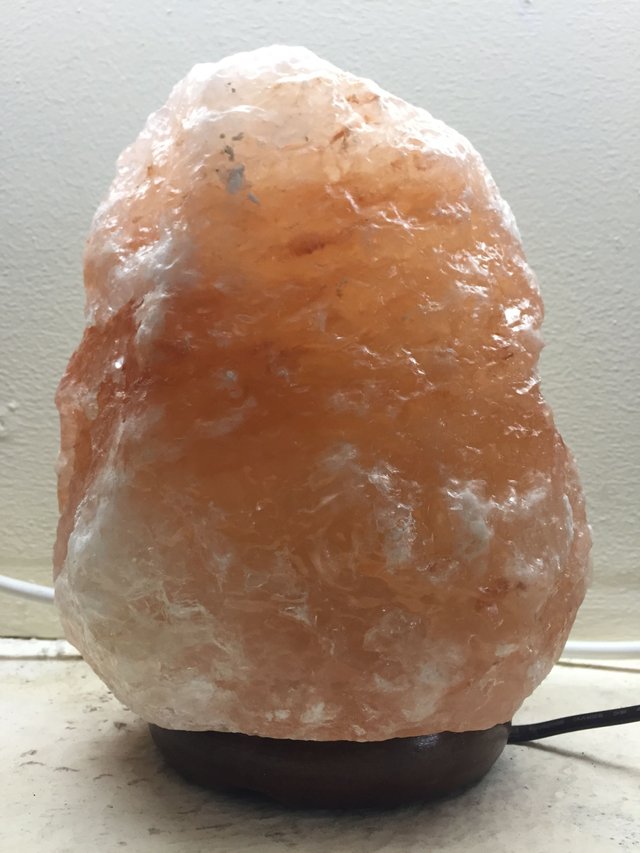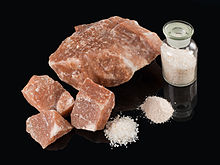Himalayan Salt

My own Himalayan Salt
History
The concentration of salt near Khewra, Punjab is said to have been discovered around 326 BC when the troops led by Alexander the Great stopped to rest there and noticed their horses licking the salty rocks. Salt was probably mined there from that time, but the first records of mining are from the Janjua people in the 1200s.
Himalayan salt is mostly mined at the Khewra Salt Mine in Khewra, Jhelum District, Punjab, which is situated in the foothills of the Salt Range hill system in the Punjab province of the Pakistan Indo-Gangetic Plain. It is located about 310 km (190 mi) from the Himalayas, 260 km (160 mi) from Lahore, and 298 km (185 mi) from Amritsar, India.

Mineral composition
Himalayan salt is chemically similar to table salt plus mineral impurities like chromium, iron, zinc, lead, and copper; some salts mined in the Himalayans are not suitable for use as food or industrial use without purification, due to these impurities.
Some salt crystals from the Himalayas have an off-white to transparent color, while impurities in some veins of salt give it a pink, reddish, or beet-red color.
Uses
Granulated himalayan salt is commonly used in cooking, in place of other table salt, and in brine. Numerous claims have been made concerning ingestion of Himalayan salt, but no scientific evidence proves it provides more health benefits compared to common table salt. Any such claims should be treated as pseudoscience.
Blocks of salt are also used as serving dishes, baking stones, and griddles.
A salt lamp consists of a large salt crystal, often colored, and lit with an electric light or candle inside. Numerous health claims have been made concerning salt lamps, but no scientific evidence supports these claims.
The Benefits of Himalayan Salt

Himalayan salt, also known as Himalayan crystal salt, is a type of rock salt best known for its striking pink color which comes from the natural presence of several trace minerals, including magnesium and iodine. Himalayan salt is unrefined and hand-mined from caves in northern Pakistan. Because it’s millions of years old and has sat untouched, many people believe that Himalayan crystal salt is a better option than standard table salt, which may contain toxins and pollutants.
Himalayan Crystal Salt: The Health Benefits
Himalayan crystal salt has matured over the past 250 million years under intense tectonic pressure in an environment that’s free of toxins and impurities. Even better, this form of salt contains about 80 natural minerals and elements used by the human body. It’s popular in Ayurvedic, Tibetan, and other traditions. Adherents believe that Himalayan salt’s unique cellular structure allows it to store vibrational energy. Many also believe that natural Himalayan crystal salt offers health benefits such as:
- Regulating water levels in the body
- Promoting stable pH balance
- Encouraging healthy blood sugar levels
- Reducing the appearance of aging
- Promoting cellular hydroelectric energy balance
- Aiding vascular health
- Supporting healthy respiratory function
- Promoting overall sinus health
- Reducing cramps
- Promoting healthy sleep patterns
- Encouraging healthy libido
- Promoting kidney and gallbladder health
Advocates of traditional medicine believe that processed table salt is energetically dead, as its crystals are completely isolated from one another. For the body to metabolize chemical table salt, it must expend tremendous amounts of energy to keep the body in a state of optimum fluid balance. This creates a burden on the body’s elimination systems as water is removed from other cells in an attempt to neutralize the unnatural, processed salts.
The Trouble With Table Salt
The table salt found in most homes, restaurants, and processed food is void of nutritional value and lacks beneficial trace minerals. Many people are unaware that common table salt is processed with questionable chemicals and dried at more than 1,200° Fahrenheit—a process that disrupts its natural chemical structures.
The average American consumes 3,400 mg of sodium chloride a day, over 1,000 mg more than the recommended limit. The body cannot dispose of it in a natural, healthy way, which can lead to tissue irritation, water retention, and high blood pressure.
Many of the traditionally attributed health benefits of Himalayan salt have yet to be scientifically established, but regardless of what salt you choose, it is clear that controlling your sodium intake can have a huge impact on your health and well-being. Fortunately, salt isn’t the only way to get vital trace minerals into your body. For that, I recommend IntraMIN®, an all-natural trace mineral supplement. Exclusively derived from plant sources, IntraMin offers 71 organically bound trace minerals including magnesium, iodine, fulvic acid, calcium, potassium, and iron.
Have you made the switch to Himalayan salt? Have you noticed an effect on your health and well-being? Leave a comment below and share your thoughts with us.
Sources:
https://en.m.wikipedia.org/wiki/Himalayan_salt
https://www.globalhealingcenter.com/natural-health/himalayan-crystal-salt-benefits/
If you like my post please follow and upvote me . Thanks! https://steemit.com/@nhitz
Resteemed your article. This article was resteemed because you are part of the New Steemians project. You can learn more about it here: https://steemit.com/introduceyourself/@gaman/new-steemians-project-launch
I upvoted but you shouldn't use Wikipedia as a source of reference.
College and universities do NOT allow Wikipedia as source of reference for a reason. Wikipedia is a bias information source and is written by normal people with no credentials. Many of the writers are uneducated and control the contents on Wikipedia.
Anyone can register to edit and write on Wikipedia. I am myself is a registerd Wikipedia writer but found out that most of the writers there are ignorant and immature so I quit dealing with Wikipedia.
Wow! Is it true? I never think of that. So what resources is better in your openion if you dont mind? Thanks
I recommend any other sources but Wikipedia.
good evening, I import Himalayan salt. Too bad, your article did not get more views. I will add you and please subscribe to my blog, as I also concentrate on health and Himalayan salt benefits, with using daily Sole!
The same lamps are produced in Çankırı in TURKEY.